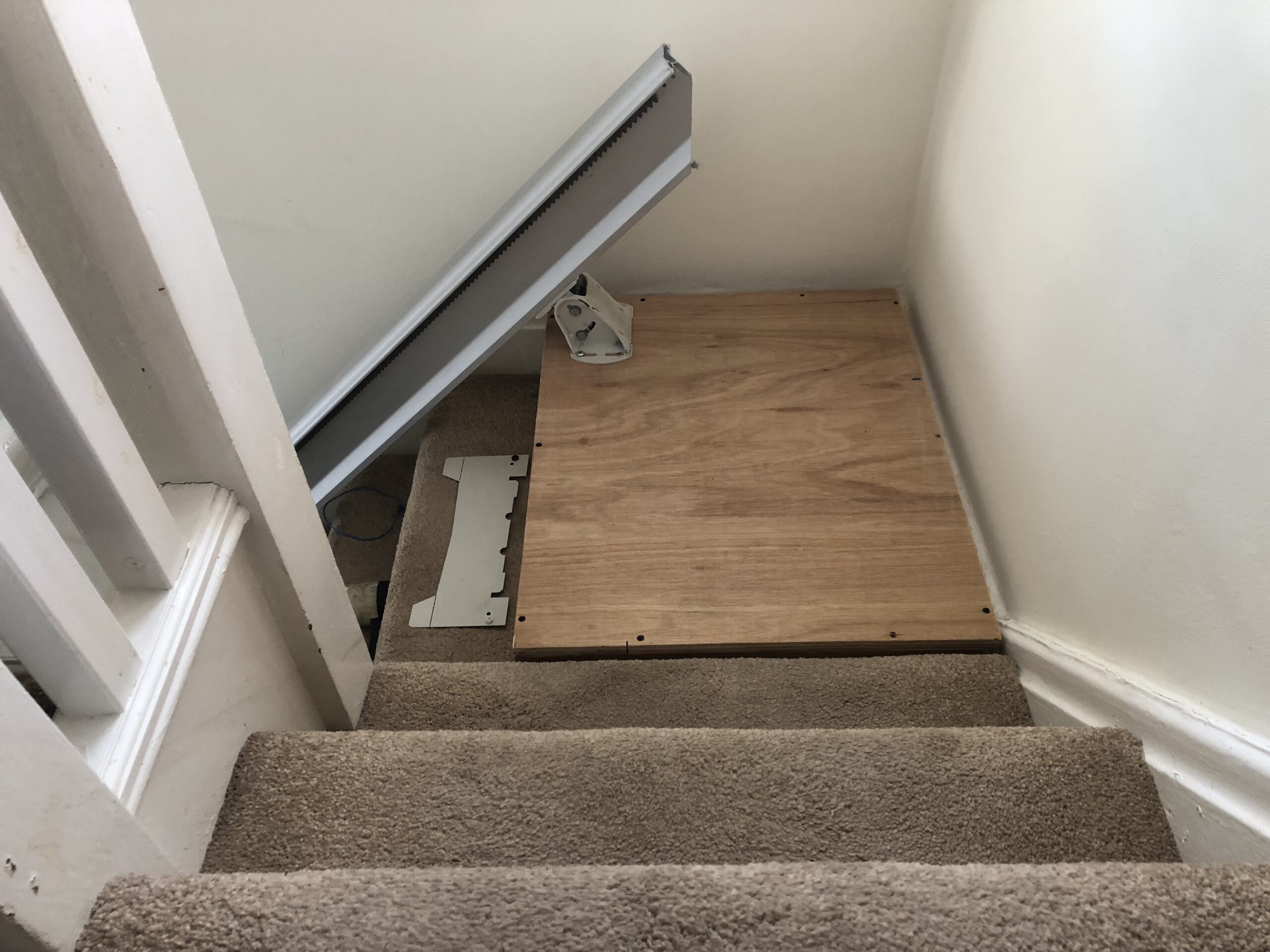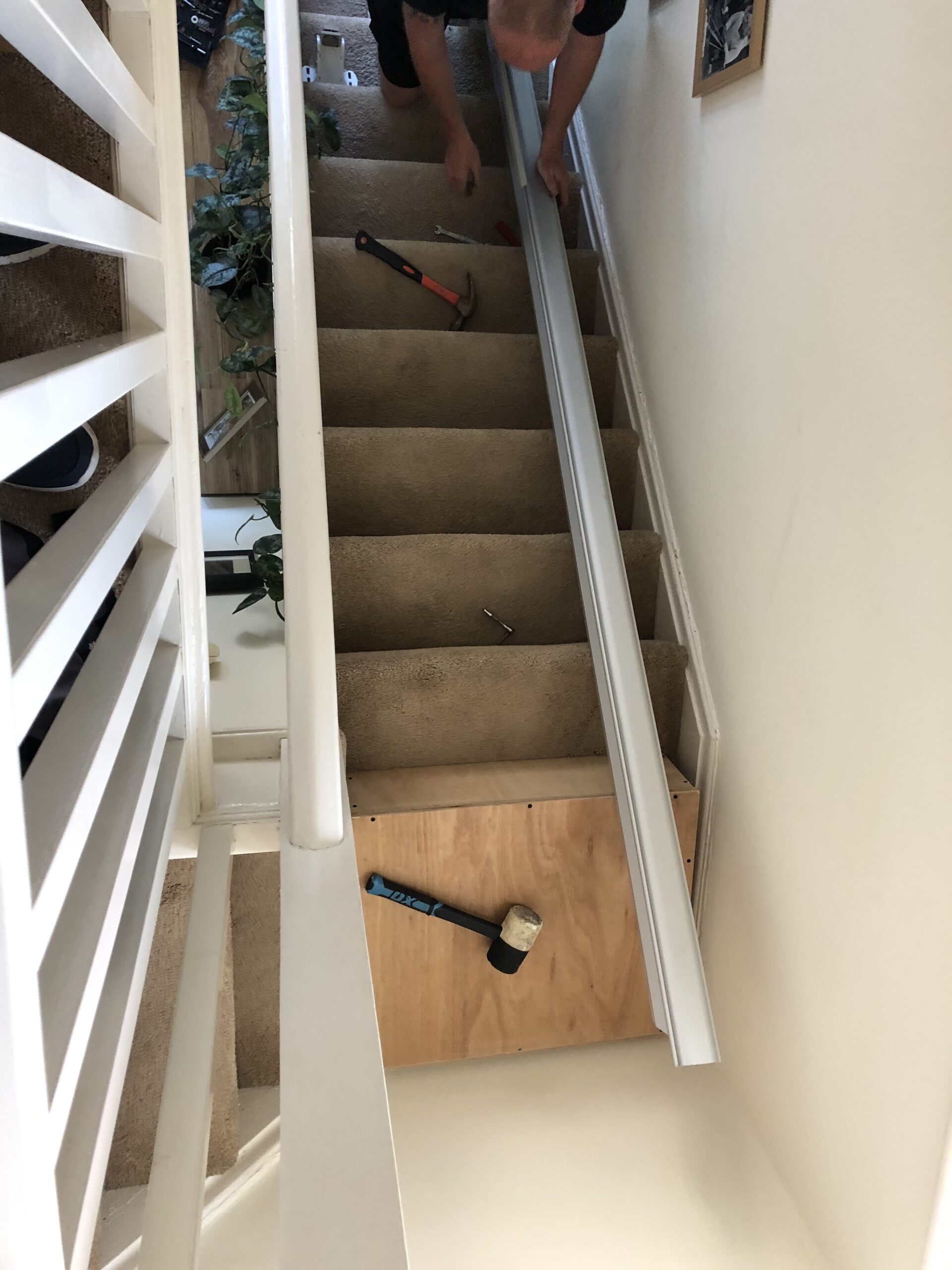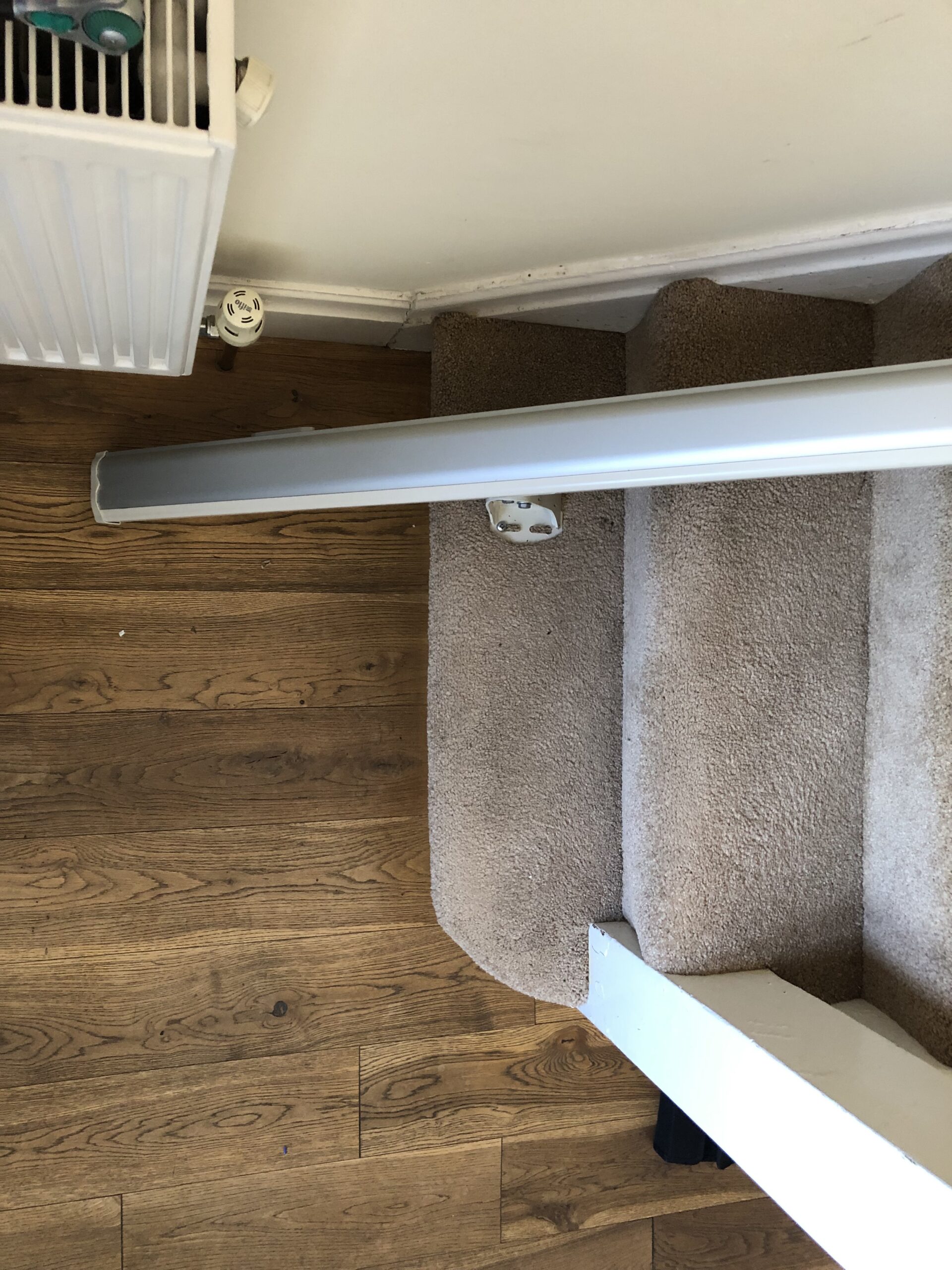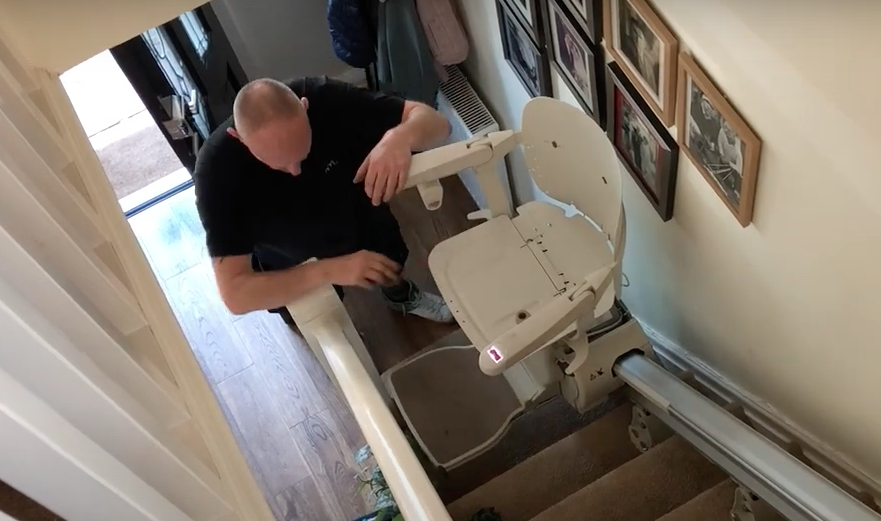In our latest case study we explain the installation of a straight stairlift on a set of curved stairs. Straight stairlifts are considerably less expensive than curved stairlifts. However, in most scenarios we recommend the stairlift carries the user over all the steps. After all, your condition could deteriorate, and it would be more expensive to alter your stairlift in hindsight, if you later needed to change it to a curved one.
But in some situations, if you are able to manage a step or two, and aren’t concerned about this, we can use a straight stairlift on a curved staircase.
Straight Stairlift On Curved Stairs
In this case study, we were able to fit a box to the top of the stairs. This allowed us to extend the rail to a higher position, and allow the stairlift to pivot, avoiding the newel post, and leaving only two remaining steps to climb. You can see the box in place here. The rail is attached to the box, and the other stairs via its legs, which are screwed into the stair treads.

A straight stairlift is quicker to install and less expensive than a curved one. Rails can often be used off the shelf for a straight installation. Whereas with a curved rail, you will sometimes need a customised rail to be manufactured. The position of the rail legs are particularly important with a curved rail. This is because with certain manufacturers, they will be welded in place. Should a leg be in the wrong place, it would ruin the fitting.
With a straight rail, the legs can easily be moved, which makes it a simpler installation.

Case Study – Problem Stairlift
This should have been a straight forward installation and straight stairlifts are generally much faster fits than curved ones. However we had a small problem with this one which was flagged up in the survey. Unfortunately the stairlift wouldn’t fit between the radiator and the newel post at the base of the stairs.


As you can see in the picture above, the stairlift rail was set proud of the wall, to allow for the radiator. The footplate clashed with the staircase newel post at the bottom of the stairs. So the stairlift installation was put on hold until the radiator could be professionally removed, which required a qualified plumber.
Once the radiator is removed, the rail can be set back closer to the wall, allowing more room for the stairlift foot rest. This seldom happens! It was a bit disappointing. The customer wasn’t too happy about it either!
However, the good news is that most of the work was already done. So once the radiator is removed, we’ll be back to finish. This post will be continued!!!
Here’s the video of the installation:
See also our case study for a stairlift on narrow stairs and checkout our YouTube channel here.


